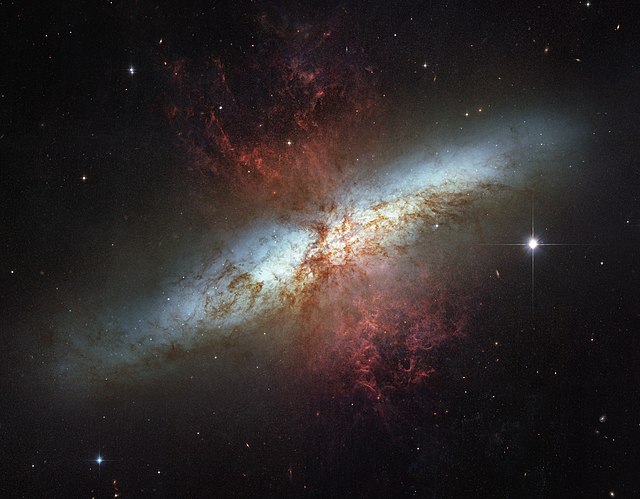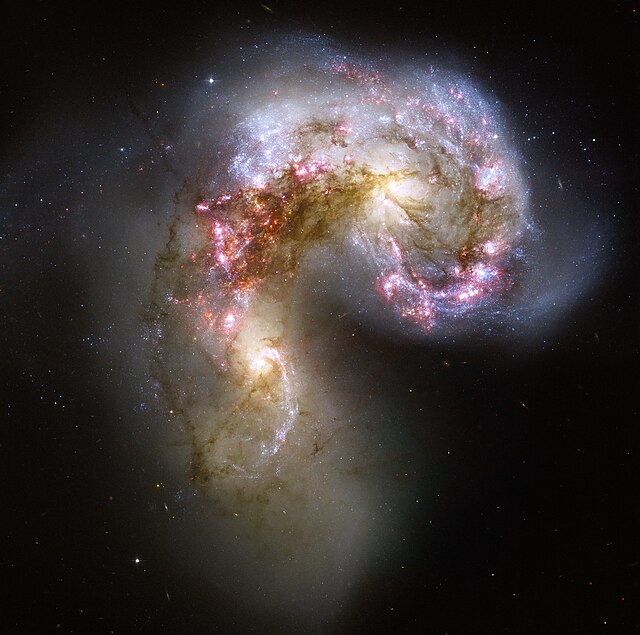Messier 82 (also known as NGC 3034, Cigar Galaxy or M82) is a starburst galaxy approximately 12 million light-years away in the constellation Ursa Major. It is the second-largest member of the M81 Group, with the D25 isophotal diameter of 12.52 kiloparsecs (40,800 light-years). It is about five times more luminous than the Milky Way and its central region is about one hundred times more luminous. The starburst activity is thought to have been triggered by interaction with neighboring galaxy M81. As one of the closest starburst galaxies to Earth, M82 is the prototypical example of this galaxy type. SN 2014J, a type Ia supernova, was discovered in the galaxy on 21 January 2014. In 2014, in studying M82, scientists discovered the brightest pulsar yet known, designated M82 X-2.

A mosaic image taken by the Hubble Space Telescope of Messier 82, combining exposures taken with four colored filters that capture starlight from visible and infrared wavelengths as well as the light from the glowing hydrogen filaments
M82 magnetic field
Composite image – HST (vis); Spitzer (ir); Chandra (x-ray)
Chandra X-ray observatory image of the galaxy
A starburst galaxy is one undergoing an exceptionally high rate of star formation, as compared to the long-term average rate of star formation in the galaxy, or the star formation rate observed in most other galaxies.
The Antennae Galaxies are an example of a starburst galaxy occurring from the collision of NGC 4038/NGC 4039. Credit: NASA/ESA.
Light and dust in a nearby starburst galaxy
Artist's impression of a galaxy undergoing a starburst.
SBS 1415+437 is a WR galaxy located about 45 million light-years from Earth.








